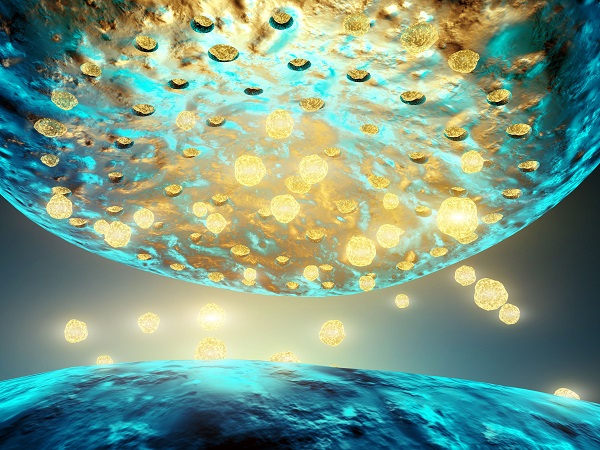27 Jan Go With the Flow
 Modeling Neural Electrical Flow Patterns
Modeling Neural Electrical Flow Patterns
From looking at possible mechanisms for information storage, we move back to its movement. It may be important to understand the patterns of electrical flow in the brain to define good models for artificial systems that attempt to match human competence in cognitive processing tasks. This is what neural network and “Thinking Machine” designers have been doing for decades. Mine is yet another attempt with a twisted set of assumptions.
Here is a theory about how impulses flow in the brain:
- Information is received through sensory channels.
- Sensory receptor cells become excited or inhibited as a result of input.
- The activated cells transmit corresponding levels of activation to sensory processing as well as linguistic and symbolic processing centers.
- In each of the centers, the stimuli are passed to intermediate cells representing general patterns which selectively filter the input and forward stimuli to the fine processor cells. Frequently encountered stimuli may be fully interpreted at this level while less familiar inputs require aid in reaching target cells.
- In the processing elements, input is compared with stored patterns and different levels of activation are passed to the output channels depending on the success of the match.
- Cells most profoundly excited also send sympathetic stimuli among all their excitation links to memory neurons containing associated data elements.
- The most excited stimulus reaching the output channel at a given time cause conscious cognitive recognition.
Watch Nick Unick’s video. Recognition follows perception, and thereafter the brain associates or relates connected bits of information until understanding emerges.
| Understanding Context Cross-Reference |
|---|
| Click on these Links to other posts and glossary/bibliography references |
|
|
|
| Prior Post | Next Post |
| The Chromophore as Digital Bit | Brain Signal Variations |
| Definitions | References |
| electrical flow models | Rumelhart 1986 |
| cognitive processing Recognition | McClelland 1981 |
| neural network perception | Thinking Machine |
| concept cognition | Aristotle |
 I think this is a good time to review the basics of electrical flow, also known as “current”. The passing of electrons between atoms in a substance causes electrical current. Remember that electrons revolve around the positively attractive nucleus in orbits at various distances. Centripetal force constantly tugs at the electrons, pulling against the attraction of the nucleus. This gives these smaller particles a tendency to detach from the atom. But the attraction force between negative electrons and positive nucleus is normally strong enough to keep them bounded in the atomic orbit. The centripetal force tugging at the electrons increases at greater distances of the electrons’ orbit from the nucleus, and magnetic force between electrons and nucleus weakens. The attraction further weakens for electrons in outer orbits because of a repulsion force from other electrons in inner cells. That explains why electrons in outer most orbit are most loosely bonded with the nucleus and vulnerable to detachment.
I think this is a good time to review the basics of electrical flow, also known as “current”. The passing of electrons between atoms in a substance causes electrical current. Remember that electrons revolve around the positively attractive nucleus in orbits at various distances. Centripetal force constantly tugs at the electrons, pulling against the attraction of the nucleus. This gives these smaller particles a tendency to detach from the atom. But the attraction force between negative electrons and positive nucleus is normally strong enough to keep them bounded in the atomic orbit. The centripetal force tugging at the electrons increases at greater distances of the electrons’ orbit from the nucleus, and magnetic force between electrons and nucleus weakens. The attraction further weakens for electrons in outer orbits because of a repulsion force from other electrons in inner cells. That explains why electrons in outer most orbit are most loosely bonded with the nucleus and vulnerable to detachment.
For some elements and substances, the outermost electrons are so loosely bonded that very little force is needed to detach them from their parent atom. Atoms in their normal state are electrically neutral as they possess an equal number of positive protons and negative electrons, creating balance. But escaping electrons create imbalance, and until the atoms thus deprived can grab a free atom from somewhere, the stable number of protons make the atoms become positively charged. After detaching from parent atoms, electrons move about freely, attracted by whatever force intersects their inertial trajectory. Other positively charged atoms in the vicinity opportunistically pull in free electrons. In general, the outermost electrons in metal atoms are very loosely bonded, so free electrons are always available in metal, which makes the metal a good conductor of electric current. Water molecules, which constitute a significant portion of the human body, are also very good conductors.
 Sensory processing or perception channels including the eyes, ears are likely to process input through a consistent pattern of flow:
Sensory processing or perception channels including the eyes, ears are likely to process input through a consistent pattern of flow:
- first layer of cells – receptor cells
- second layer of cells – relay cells
- third layer of cells – filter cells
- fourth layer of cells – memory cells
- fifth layer of cells – association cells
In a way, you can think of the different types of cells as components in the circuit of the brain, just like transistors, coils and capacitors act as components in an electronic circuit. I have illustrated this idea of electrical flow patterns in the brain below.
Having processed the input, we then must go with the flow, and determine how the brain delivers cogent, actionable output while continuing to process new inputs.
Aristotle’s Associationism
We do not yet know all the answers to unravel the mysteries of human consciousness and ideation. According to a theory of neural learning and processing called associationism (discussed long ago by the Greek philosopher, Aristotle), the brain has some way of linking concepts to each other. The linking or association of concepts is what enables us to recognize and interpret the things we perceive. It is also fundamental to the learning process. In the electrical flow model described on the previous page, the sixth step is the main association step. I will post more information on associationism as I explore cognitive processes in the sections on perception and cognition.
The importance of the sixth step is that sympathetically activated cells receive charges after output has been activated from prior levels, and at the same time as successive input or the next frame in the stream of input is in the network. The temporal lag could be critical to comprehension because it can aid in maintaining the immediate context of the incoming stimuli, providing an environment for each new frame of data. The entropy of information out of context increases dramatically, and disambiguation of inputs with multiple possible interpretations would become nearly impossible without the continuity provided by the temporal element of processing.
- Perception = Input
- Reception cells produce impulses
- Relay cells relay impulses
- Filter cells analyze input features
- Memory cells recognize input
- Association cells respond to input
- The overall pattern of activation elicits a conscious response (Output)
These processes at a thousand billion synapses form the warps and woofs of thought, from which we weave the tapestries of understanding.
If we can design processes to process bits and bytes in a similar manner, I think we have achieved a form of neuromorphic computing.
| Click below to look in each Understanding Context section |
|---|









